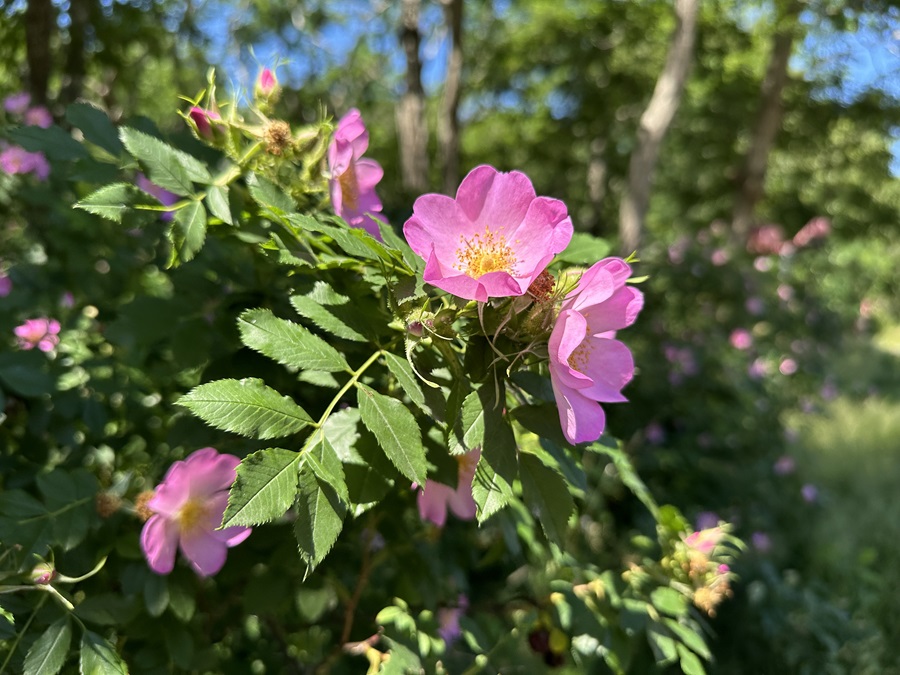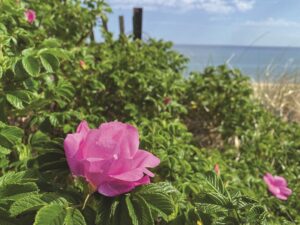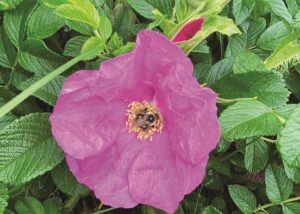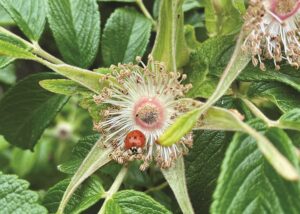
The last days of May saw the first beachside blooms of the naturalized Asian species Rosa rugosa, and June was filled with the dramatic, arching white displays of multiflora rose, the notorious invasive rambler. Now the native roses are having their moment. Several species are local to the Outer Cape, each with a similar pink and yellow flower but differentiated by small details like the number of blooms per inflorescence. Pictured here is a native rose hedge on Route 6 in Truro near Bayberry Gardens. Judging by the curve of the spines, it looks like Rosa palustris, the swamp rose, but going by its leaf serration, it favors Rosa virginiana, the Virginia rose. It’s covered in both strange and familiar pollinators, smells heavenly, and perfectly complements the decorative flamingos nearby.



